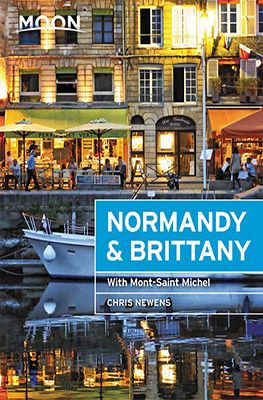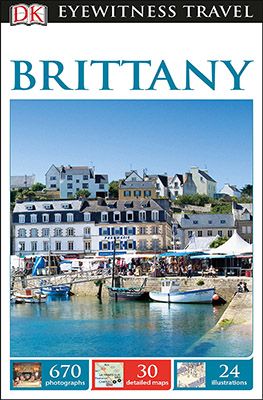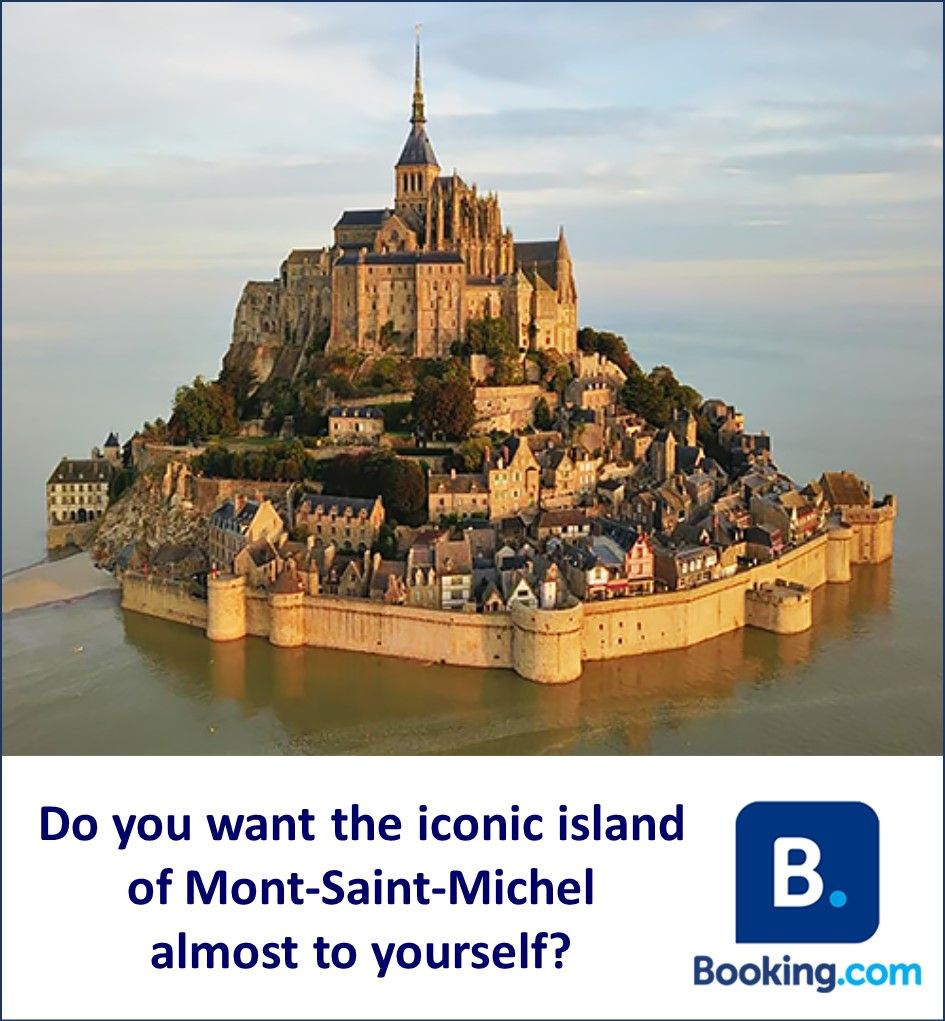The rocky island of Mont Saint-Michel is perhaps one of the most important sights in France. The bay of the same name lives to the rhythm of the tides. The tidal range is no less than 14 metres. When the sea rises, a tidal wave arises with a height of about 50 centimetres, the “mascaret”. This always attracts a lot of attention. But most tourists come to visit Mont Saint-Michel itself. Every year, more than 3.5 million visitors from all over the world come to visit. Like us, they shuffle through the narrow streets on their way to the stately abbey. But recently we spent the night on the iconic and then wonderfully calm island. We also experienced the mascaret that made itself extra prominent due to the storm. High time, therefore, for an update to this blog.
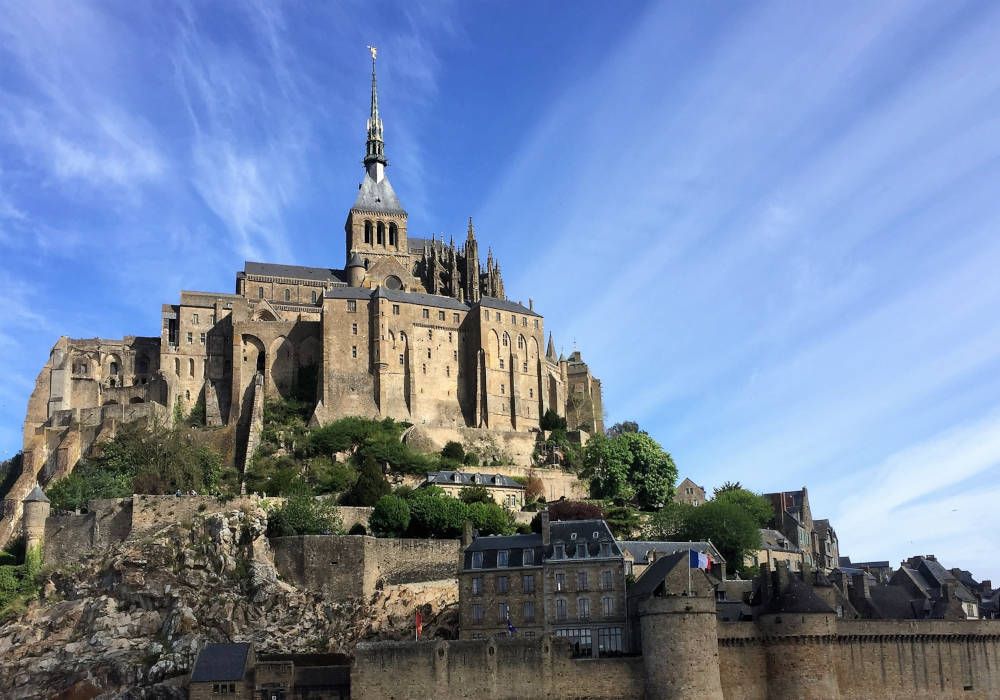
History of Mont Saint-Michel
Mont Saint-Michel is strategically located in the bay on the border of Normandy and Brittany. However, it did not have a military function. Already in the 8th century, there was a small place of worship here. According to legend, Archangel Michael appeared to a priest who had visions of a church on the rock. Gradually the place developed into a Benedictine monastery which in the 12th and 13th century was very popular with pilgrims from all over the world. In the Middle Ages, Mont Saint-Michel became a leading centre of science. After the French Revolution, the abbey became a prison. Since 1979, the island has been a UNESCO World Heritage Site.
Since 2000, a great deal of work has been done to prevent the silting up of the bay of Mont Saint-Michel. Not intervening would mean that the island would be completely surrounded by the mainland in 2040. By dredging and demolishing the dike between the island and the mainland, there is sufficient tidal action again. Now Mont Saint-Michel can be reached via a newly built bridge.
Sights of Mont-Saint-Michel
A walk around the island is really to enjoy the narrow streets, surrounded by beautiful, historic buildings. At Mont Saint-Michel you can also visit some small museums. You have a fantastic view of the bay and the mainland from various points. At low tide you can see many tidal flats crossing to Mont-Saint-Michel. But you shouldn’t miss the following highlights:
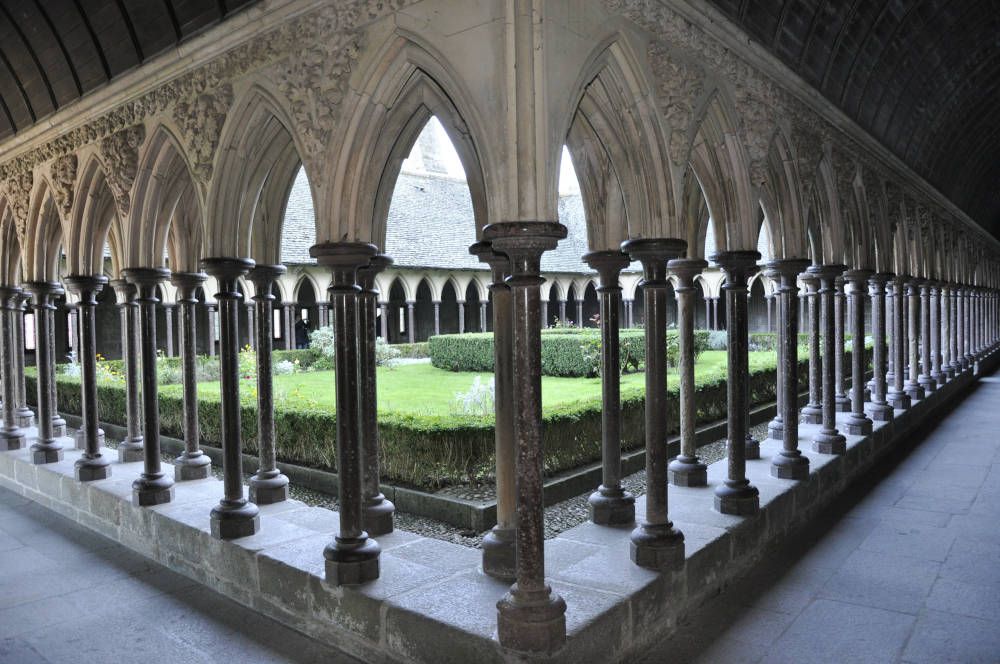
Abbey of Mont Saint-Michel
The absolute highlight is the abbey that towers high above the island. Just the climb up the narrow, cobbled streets to the entrance of the abbey is an experience in itself.
Over the centuries, high walls surrounding the church ensured that this was an impregnable fortress. Many Benedictine monks used to stay here. Nowadays, a small group of about 30 monks still resides in the abbey. The abbey has three levels. The monks lived on the highest level, the abbot received his important guests on the middle level and soldiers and pilgrims stayed on the lower level.
The church has a very nice interior with a particularly beautiful nave. You can see huge pillars in the crypts. These served as a foundation for the building. In addition, the cloisters, the knights’ hall and the monks’ dining room are worth a visit. A visit to the abbey is even more interesting if you use the audio tour. You will get more explanations and the stories will stimulate your imagination about the time that the monks lived and worked here. Besides that, you can enjoy the fantastic views that you get at various points over the bay.
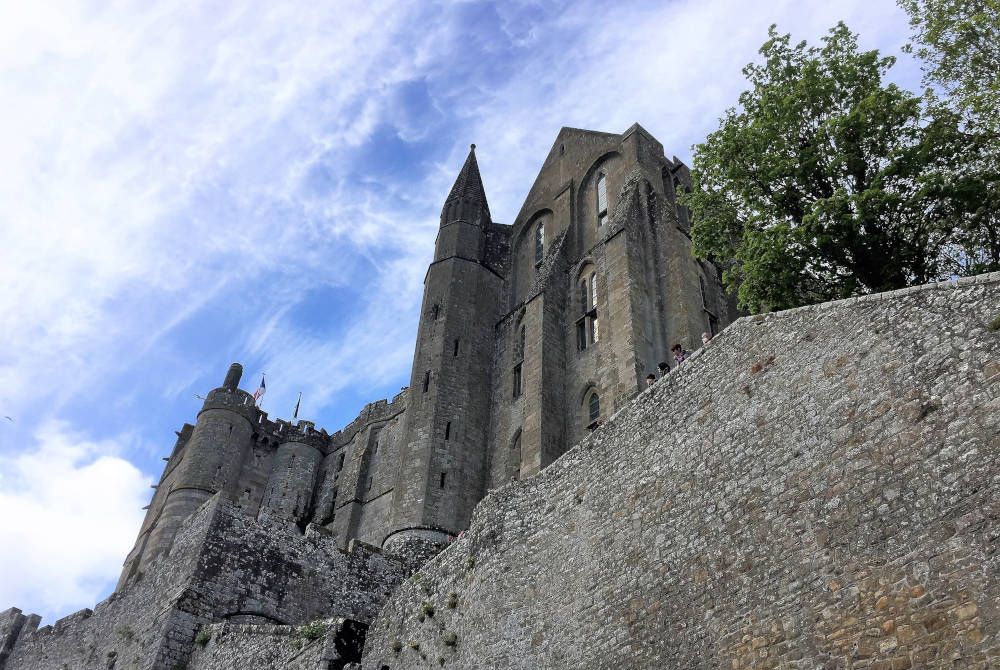
The Grande Rue
This is a somewhat exaggerated name for a narrow street, where at daytime you can walk among many tourists in high season. In the old days, pilgrims used to wander the streets here. The historic buildings on either side of the street are now mainly used as a restaurant, hotel or souvenir shop. The views from the street to the ocean are beautiful, wherever your are. The road ends at the abbey gate.
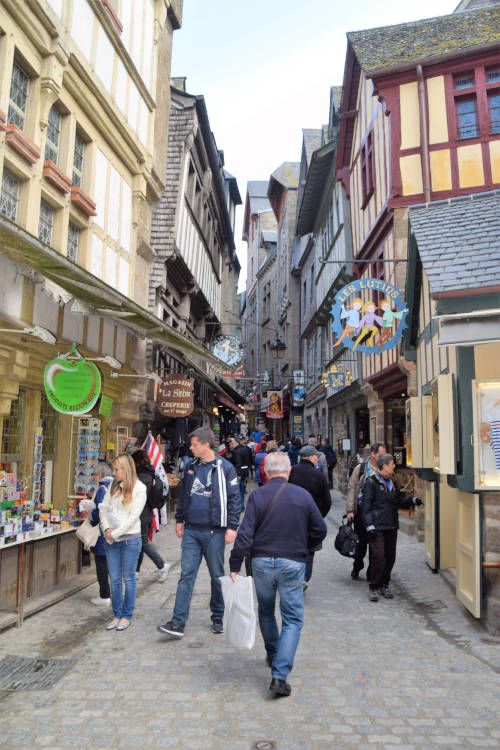
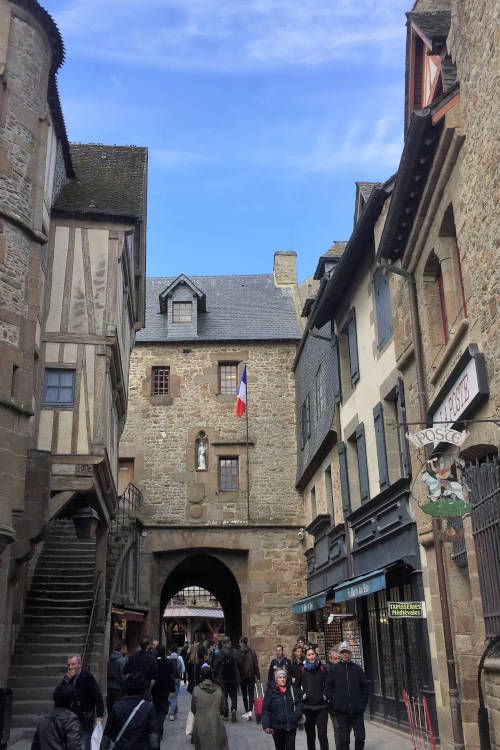
Église Saint-Pierre
If you walk up to the abbey via the Grande Rue you will pass the parish church Église Saint-Pierre. It is certainly worthwhile to go in. In this small church you will find a statue of the archangel Michael. He is in his armour and trampling on the dragon representing Satan. The archangel Michael was especially important for expelling the devil from the people. The church dates back to the 11th century. It is a small but beautiful church with a cemetery. An additional advantage: it is wonderfully quiet and especially magical at night.
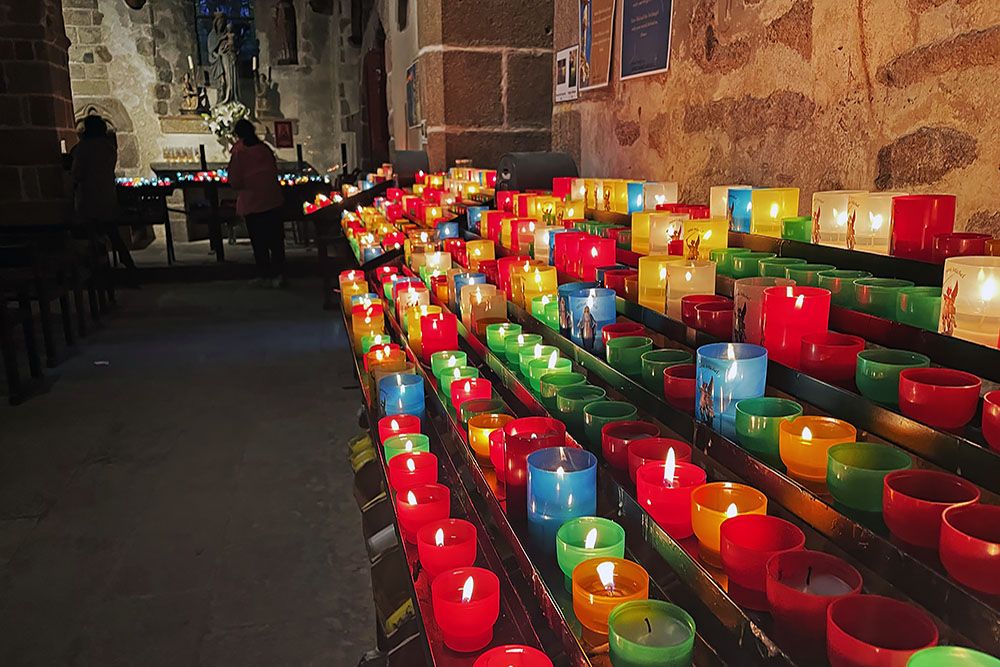
Walking across Mont-Saint-Michel’s mudflats
If you have done mudflat hiking before on the Dutch Wadden Sea, you will know how special this unique activity is. You can also go mudflat hiking around Mont-Saint-Michel and here, too, it is very special. You will discover the UNESCO World Heritage Site from a totally different perspective. You will see the imposing abbey rise from the middle of the sea in all its glory. This makes for an unforgettable experience! In addition, mudflats at Mont-Saint-Michel offer the opportunity to discover the rich biodiversity of the coastline. Different species of birds, shellfish and other sea creatures, for example.
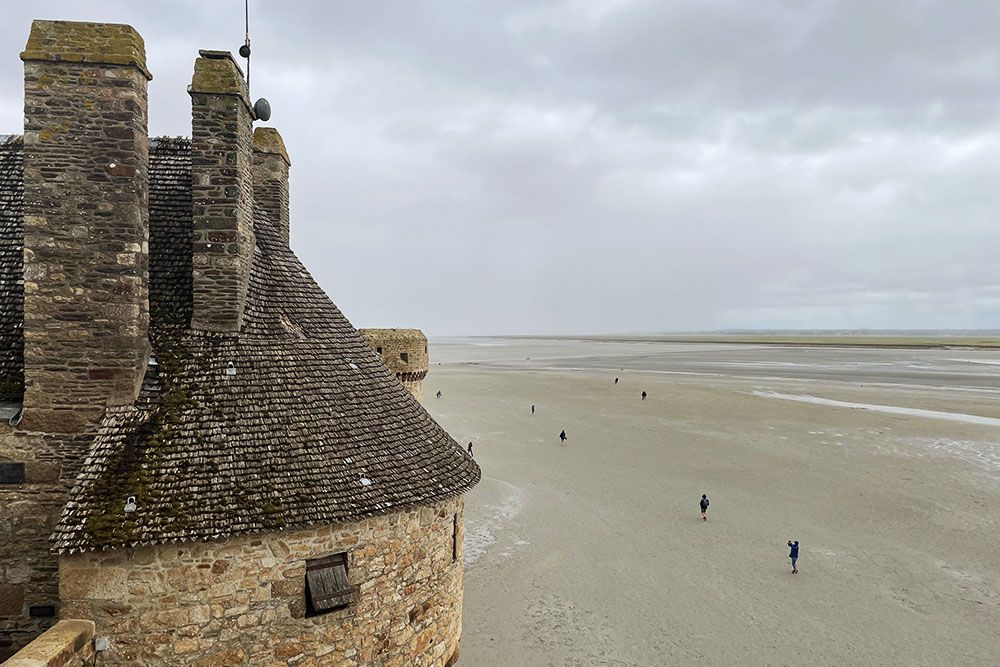
Walking across Mont-Saint-Michel’s mudflats is suitable for both beginners and experienced hikers. There are several routes with different levels of difficulty, depending on your physical abilities and interests. You start at the foot of Le Mont-Saint-Michel where you enter the seabed with the help of an experienced guide. As with mudflats on the Dutch Wadden Sea, the guide is vital. This is because the tide can change rapidly, making the mudflats life-threatening if you don’t walk in the right places. What’s more, your walk is much more interesting with a guide. You learn about the area’s unique flora and fauna, too. Detailed information can be found on the Normandy Tourism website.
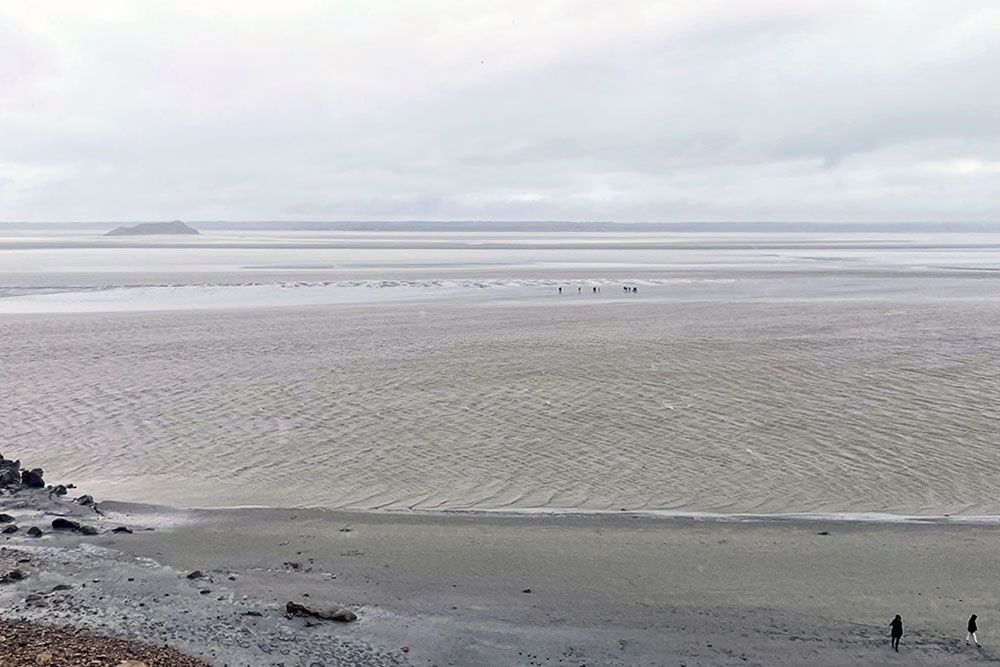
Omelette de la mère Poulard
The culinary emblem of Mont-Saint-Michel is a puffy omelette that has been prepared for centuries. The deliciously classic dish is named after Annette Poulard, better known as “la mère Poulard”. In the 19th century, the Poulard couple ran an inn at the foot of the mountain. Because of the tides, it was impossible to predict when and how many travellers would arrive. To still be able to serve guests some food right away, Annette Poulard invented a quick-to-make appetiser: a particularly light but tasty omelette.
The “omelette de la mère Poulard” became the inn’s most famous dish. This was not only because of its taste. In particular, its unique method of preparation was (and is!) a real attraction for guests. It is still a popular delicacy at the Hotel-Restaurant La Mère Poulard. The dish has even found its way into other restaurants on Mont-Saint-Michel and beyond. Still, our tip is to order the omelette from the restaurant where it originated. You may pay top dollar but the culinary experience is unforgettable. Don’t forget to immediately take a look in the open kitchen while the omelette is being prepared in front of you!
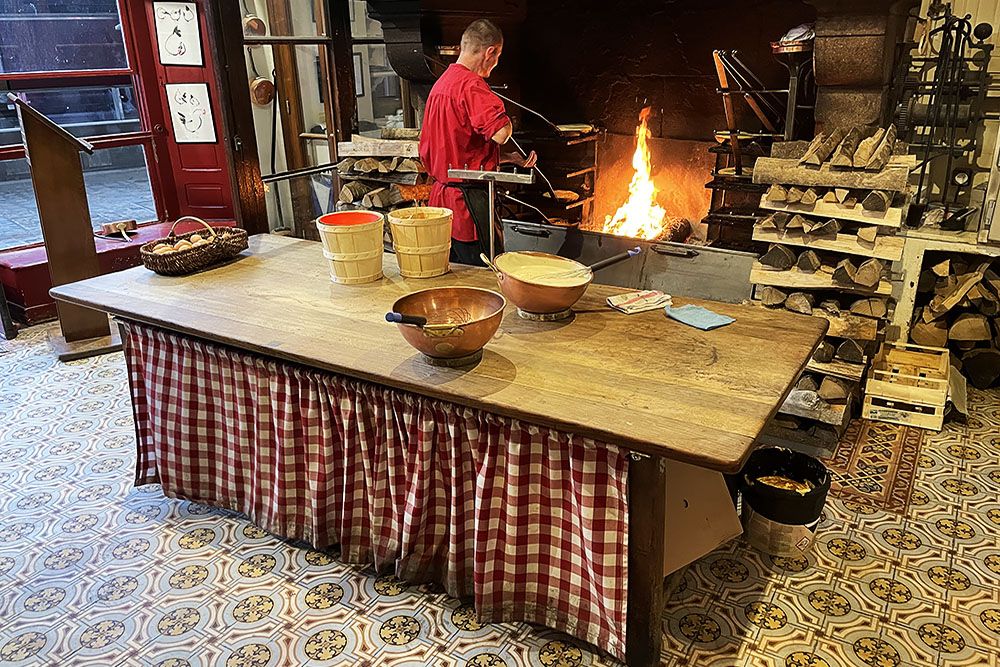
Visit to Mont Saint-Michel: practical information
Mont-Saint-Michel is located on the border of Normandy and Brittany and is best reached by car or campervan. From the A84 motorway, it is about 20 kilometres away. On the motorway, the exit to Mont Saint-Michel is clearly signposted. If you travel by train, the nearest train station is Pontorson. From here you can take a shuttle bus to Mont Saint-Michel.
There are also two long-distance cycling routes leading to the island: the Véloscénie from Paris and the Vélomaritime from Dunkirk. However, you will have to park your bike on shore! We recently cycled part of the Vélomaritime to Mont-Saint-Michel. A blog about our cycling adventure will soon appear on this travel site.
If you come by car, you can park it in one of the 4,000 paid parking spaces. You'll find onshore car parks 2.5 kilometres from the island.
There are three ways to get to Mont Saint-Michel from the car parks: on foot (about 35 minutes), with a free shuttle bus (10 minutes) or with a horse-drawn cart, a so-called maringote (25 minutes). You will have to pay for this.
Mont Saint-Michel is always open for visits. Please note that the abbey does have specific opening hours:
- Low season (January-April and September-December): from 9:30am to 6:00pm.
- High season (May-August): from 9:00am to 7:00pm.
- The abbey is closed on 1 January, 1 May and 25 December.
Access to the abbey is possible up until 1 hour before closing time. A ticket is required for a visit to the abbey (€10). An audio guide costs €3. On busy days there is a long queue in front of the entrance. To avoid this, you can order a ticket online in advance for the same price on this website. It is certainly worthwhile to visit the Abbey as early or as late as possible in the day, before the great flow of tourists gets going. More information can be found on the website of Mont Saint-Michel abbey.
Strolling through the maze of narrow streets and alleys, you find so many restaurants and cafés where you can enjoy traditional Norman dishes. Be sure to try the famous "Omelette de la mère Poulard", the island’s culinary emblem. Although several restaurants serve this age-old dish, our tip is to do so at the restaurant where it once began: Hotel-Restaurant La Mère Poulard. Certainly not cheap, but the culinary experience is unforgettable. By the way, you can also go to this authentic 19th-century restaurant for other delicious dishes.
Many restaurants came across to us as "tourist traps": restaurants where your wallet gets more attention than hospitality and quality of food. In a particularly popular tourist attraction like Mont-Saint-Michel, you can’t escape this. Restaurants that have a good reputation are La Sirene and the restaurant at the Hotel Du Guesclin.
There are several hotels on the island. But do realise that rates are higher than ashore. Of course, this is especially true in high season. For instance, a night in a hotel in August will easily cost €180 per night. If you book late, you'll spend (well over) €200. But in low season you can often get it for under €160. Of course, this is still a high amount, especially compared to hotels ashore or even further inland. But the experience is unprecedented. In the evenings, you can make the most of the tranquillity as you stroll through the idyllic streets and you also have the unique photo locations and fantastic views all to yourself.
Another tip if you want to stay on the island: only take one backpack with you as luggage. After all, walking with a (heavy) case along the cobbled streets or steps to your hotel is far from comfortable.
Of course, you can also just book a cheaper hotel on the coast. Then visit the island in the late afternoon and return to shore as late as possible. The free shuttle buses run between 7 a.m. and midnight.
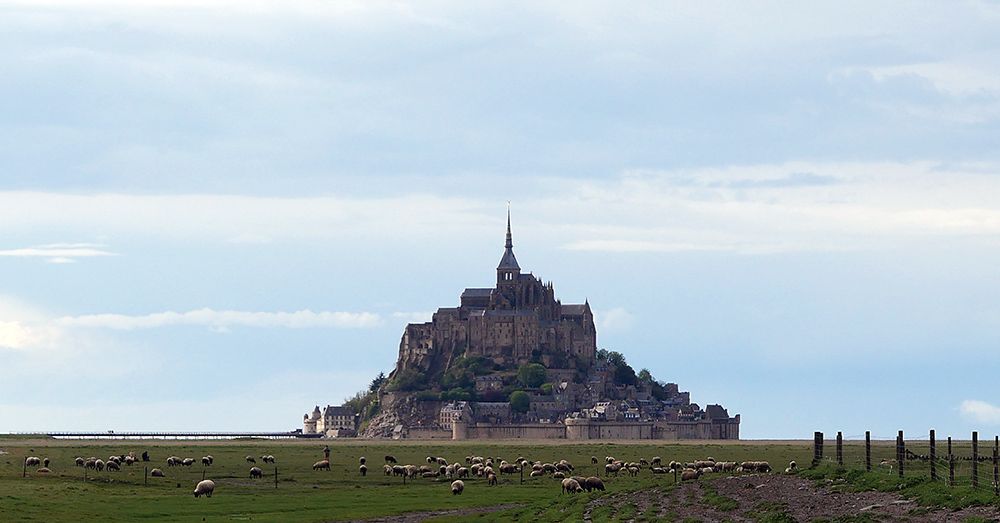
Other topics you may be interested in
- Normandy: historical sights and beautiful nature
- A weekend in Lille: All highlights at a glance
- A river cruise through Brittany

